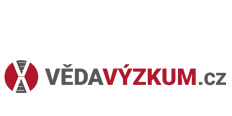On the 14th April 2016, I attended a guest lecture in the Faculty of Arts of CU on the ‘Wasteland in Cities from the Middle Ages to the Present’ by Peter Clark, a professor of European urban history at the University of Helsinki. With it being a topic I had not previously breached before, I found it fascinating to learn more about the history and significance of urban wasteland – which, as Clark pointed out, has not been an area that has been widely explored by historians.
Clark introduced by outlining the decline of history in America and Britain within the last few years. Despite it doing well from an internalist viewpoint, he stated that one of the difficulties contributing to this is from an external perspective, it has not been gaining much public recognition or funding etc. For instance, Finland had cut in funding for historical research, and in Japan the support for history professors is in decline. In relating to the internalist viewpoint, historians are very individual in simply only addressing their own areas of expertise and interests, rather than discussing amongst each other. Thus, it is a non-universal language. With this in mind, Clark insisted that urban history is not explored enough and would benefit with contact from other disciplines. His lecture therefore explored this context and addressed these kinds of concerns.
He argued that urban wasteland (also known as the French term ‘terrain vague’) is one of the key spaces of the pre-modern and modern European city; being a backbone in their spacial history. Yet, it is extremely ignored by historians and looked upon in a negative light in being marginal or threatening by civic authorities. To Clark, it is somewhat surprising that urban wasteland was neglected by historians; due to social scientists, architects and policy makers being increasingly concerned with it since the 1980s, as well as film makers also exploring such topics (e.g. Terrain Vague by Marcel Carnes and Wasteland by Kim Harley). Moreover, urban wasteland has gone back very far culturally; in the forms of paintings, poems and novels – notable creators being Charles Dickens, Victor Hugo and T. S. Eliot.
In evaluating the problems of analysis and definition, Clark related this to issues with terminology. The terms ‘wasteland’ and ‘terrain vague’ only recently emerged. For instance, in Britain, the term ‘urban waste’ was not used until the end of the 19th century and ‘terrain vague’ came in 1900. Before 1900, terms to reference it were ‘vacant land’, ‘empty land’ or ‘wasteland’. The second issue is the question of what or where is wasteland? He began to determine this by looking at cities such as Paris, Prague, Vienna, Geneva, and Copenhagen (amongst others) and revealing the areas of wasteland and empty land in their landscape from a few centuries ago. He also looked at Bratislava, in which he compared an old picture to a present day variation; pointing out that wasteland is very prevalent even to the present day.
In defining it, Clark explained that wasteland is very much an umbrella term that covers many different kinds of empty spaces. The main categories being structural wasteland (around castles, rocky areas, marshland areas by rivers, quarries, areas near airports and railways); crisis wasteland (stemmed from natural man-made disasters such as earthquakes, volcanic eruptions, war, flooding); economic transformation (late medieval contraction of urban populations, suburbanisation, slum clearance, de-industrialisation and transport changes). However, despite the different categorisations, he did point out that many of these spaces do share key features. For instance, they are generally unbuilt and uncultivated, areas of transition and ambiguity, as well as being outside of official control.
The next segment explored changes over time. In the late Middle-Ages, as urban economies restructured and re-populated, new areas of wasteland proliferated. Moreover, crisis-created empty space was a continuous feature of early modern towns, such as the Great Fire of London 1666 or Lisbon in 1698. With the urban growth in the 19th century, some parts of wasteland disappeared as others emerged; these impacts included embankment, town fortifications being phased out, house building, public buildings being created, railways construction, effects of war etc. In the 20th century, the main impact was economic transformation – such as deindustrialisation and suburbanisation, as well as flight population, which became a massive generator or urban wasteland in western cities. Urbanisation also meant waste tips multiplied.
Clark’s final segment discussed the function of urban wasteland. One function is it often being a land bank for cities; providing flexibility of accessible land for construction of housing and public and business buildings. The second function is its economic resource; being used often for a seasonal basis for gardens, orchards, grazing animals etc. The third and final function includes the social and cultural resources. For example, street football was banned and displaced to wasteland; moreover, it became a platform for the burial of plague victims, drinking and socialising and scavenging. Criminals also used it for meetings and concealing stolen property.
All in all, the lecture unveiled a very unexplored topic, thus, I left with more knowledge and a bigger understand of the functions and importance that urban wasteland has had to our history.
Jennifer Nee is a student of Drama and English and American Literature at the University of Kent. She is currently studying English Literature at Charles University Prague for two semesters. She is a keen reader and writer, prompting her interest in journalism and the publishing sector. Therefore, she wanted to contribute to iForum to gain more experience in these areas, as well as believing it to be a great opportunity to involve herself in the Czech culture; such as exploring their traditional aspects of theatre, literature and cuisine amongst other things. Furthermore, she also believed the iForum to be a chance to interact with other aspiring writers and journalists. |















